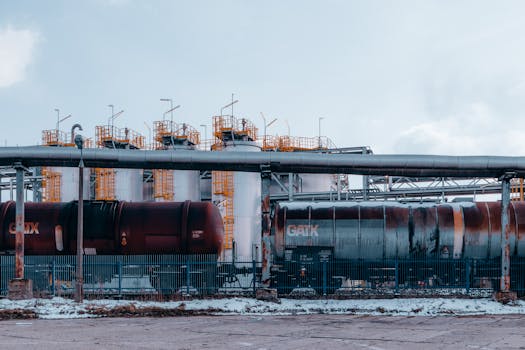
**
The Great Western Railway (GWR) has made significant strides in its commitment to decarbonizing the rail network with its recent successful trial of a battery-powered train. This groundbreaking initiative, utilizing cutting-edge battery technology, powerfully demonstrates the viability of replacing diesel units with cleaner, more sustainable alternatives. The trial, hailed as a major step forward in green rail technology, opens doors to a future where quieter, emission-free trains dominate passenger and freight lines across the UK and beyond.
GWR's Battery Train: A Technological Leap Forward
The GWR trial involved a Class 66 locomotive retrofitted with a state-of-the-art battery system. This isn't simply a small-scale experiment; the results are significant and suggest a potential paradigm shift in the railway industry. The success of this trial reinforces the growing trend toward battery-electric trains and underscores the accelerating drive towards net-zero targets within the transportation sector.
Key Findings from the GWR Battery Train Trial:
- Successful shunting operations: The battery train successfully completed numerous shunting maneuvers, proving its capability in heavy-duty rail operations typically handled by diesel locomotives. This aspect is crucial, highlighting the versatility of the battery technology beyond simply transporting passengers on mainline routes.
- Impressive range and power: The trials showcased a substantial range on a single charge, exceeding initial expectations and demonstrating that battery technology can effectively meet the demands of longer journeys and heavier loads. This challenges misconceptions about limited battery life in such large-scale applications.
- Reduced noise pollution: A considerable reduction in noise pollution was observed during the trial, pointing to a quieter and more environmentally friendly railway experience for communities living near rail lines. This contributes to a significant improvement in the quality of life for those impacted by rail noise.
- Significant emission reductions: The most impactful finding is the dramatic reduction in greenhouse gas emissions. By replacing diesel with battery power, the GWR significantly contributes to lowering its carbon footprint and advancing its sustainability goals. This aligns with global efforts to mitigate climate change through transportation decarbonization.
The Implications for the Future of Rail Transportation
The implications of the GWR battery train trial are far-reaching and have profound implications for the entire rail industry. This success story fuels optimism for a wider adoption of battery-electric trains, particularly for shorter branch lines and shunting operations.
Benefits Beyond Environmental Concerns:
- Cost Savings: While initial investment in battery technology might be higher, long-term operational costs, including reduced fuel expenses and maintenance, could ultimately lead to significant cost savings. This financial incentive will play a crucial role in driving wider adoption.
- Improved Air Quality: Eliminating diesel emissions translates to cleaner air in and around railway lines, leading to significant public health improvements, particularly in urban areas.
- Enhanced Reliability: Battery technology, with improved maintenance and reduced moving parts, could lead to increased reliability and reduced downtime compared to diesel locomotives.
- Technological Advancement: The GWR trial serves as a catalyst for further innovation and development in battery technology, paving the way for even more efficient and powerful battery systems for future rail applications.
Overcoming Challenges and Future Developments
While the GWR trial paints a rosy picture, challenges remain before widespread adoption of battery-electric trains becomes reality. These include:
- Battery charging infrastructure: The development of a robust and efficient charging infrastructure is essential to support widespread deployment. This involves significant investment in charging stations at various locations along rail lines.
- Battery lifespan and replacement: The lifespan and cost of replacing battery packs are key considerations that need to be addressed to ensure long-term viability and cost-effectiveness.
- Weight and capacity: Balancing the weight of battery packs with the overall weight capacity of trains requires further technological advancement and optimization.
However, ongoing research and development in battery technology are continually addressing these challenges. Solid-state batteries, for instance, promise higher energy density, longer lifespans, and improved safety, making them ideal candidates for future railway applications.
The Global Shift Towards Green Rail
The GWR battery train trial is not an isolated incident. Across the globe, railway companies are actively exploring and implementing alternative fuel and power solutions to reduce their environmental impact. This trend towards green rail is driven by a combination of environmental concerns, government regulations, and consumer demand for sustainable transportation options. Hydrogen fuel cell trains, for example, are another promising technology gaining traction worldwide.
The GWR's success with battery technology inspires confidence in the feasibility of a greener, quieter, and more sustainable future for the railway industry. This landmark trial not only showcases the potential of battery technology but also demonstrates a commitment to environmental responsibility and innovative solutions for a cleaner transportation future. The future of rail is electric, and the GWR is leading the charge.




















